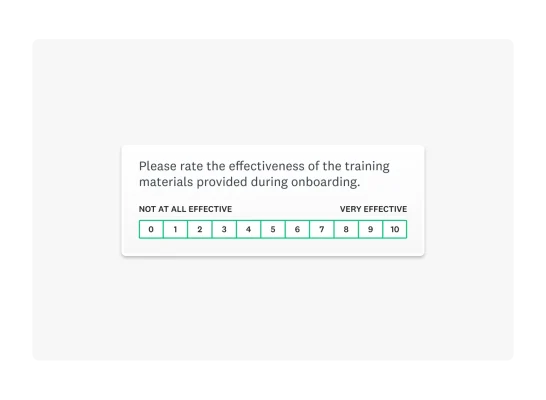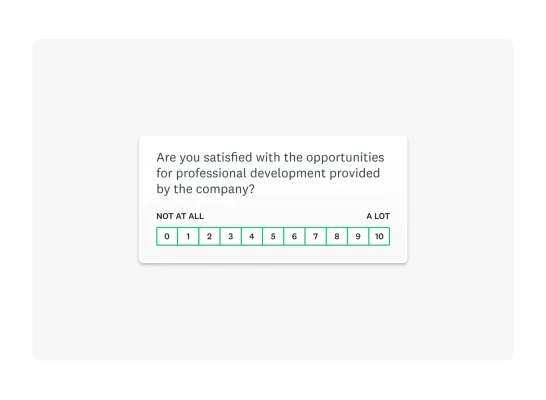How to measure & improve CSAT call center scores
Learn how to measure and boost call center customer satisfaction scores.

Call center representatives often ask customers to participate in a customer satisfaction survey after an interaction. Feedback surveys measure customer satisfaction score (CSAT).
CSAT is a metric to gauge customer satisfaction with a company’s interactions. It’s typically captured through a rating scale, with higher scores reflecting successful support and customer satisfaction.
Regularly measuring CSAT allows CX professionals to improve customer experiences, increase customer loyalty, and reduce customer churn.
In this article, you will learn how to calculate call center CSAT, what a good CSAT score is, and how to improve your score. Read on for a detailed guide to call center CSAT scores.
How to calculate call center CSAT
1. Gather customer feedback
First, you must gather enough customer feedback.
To calculate call center CSAT, the call center must collect many customer responses to understand the customer journey accurately. A sample size calculator will help you determine how many people to survey for accurate results.
Post-call surveys are common for call centers and can be completed immediately over the phone or shortly after by email. Whichever method you choose, you need to ask a basic CSAT question: “How satisfied were you with the service you received today?”
The rating scale is 1–5, with 1 being “very unsatisfied” and 5 being “very satisfied”.
Tip: Use a customer survey template like our Customer Satisfaction Survey Template.
2. Identify the number of satisfied customers
The next step is to analyze the feedback data by identifying the number of customers who rated their experience as a 4 (satisfied) or 5 (very satisfied).
These responses will form the basis for calculating your call center’s CSAT score, indicating overall customer satisfaction.
3. Calculate CSAT percentage

To calculate call center CSAT, you’re going to figure out the percentage of satisfied customers out of the total number of responses. Use this formula:
CSAT percentage = (Total Number of Responses / Number of Satisfied Customers) × 100
For example, if 80 out of 100 customers gave scores of 4 and 5 on a scale of 1-5, the CSAT percentage is 80%.
(100 / 80) × 100 = 80%
4. Interpret the score
To interpret the CSAT score, consider it similar to a test grade.
Generally, an 80% or higher score suggests the call center delivers excellent service, meeting or exceeding customer expectations.
Conversely, lower CSAT scores indicate areas where service may not fully align with customer needs, highlighting opportunities for improvement.
5. Monitor over time
Regularly monitoring your call center’s CSAT score is essential for tracking fluctuations and improvements. It reveals trends over time and the effectiveness of training programs or technology updates.
Consistent measurement, ideally every quarter or more frequently, provides valuable insights into how changes impact customer satisfaction. This allows you to make timely adjustments to enhance service quality.
What is a good call center CSAT score?
Now that you understand how to calculate a call center CSAT score, how do you know what is considered good? A good CSAT score typically falls in the 75-85% range. However, this can vary based on the industry and customer expectations.
- Above 85%: This score is excellent and above average. This indicates a high level of customer satisfaction and reflects well on a call center’s employees.
- 75% to 85%: A score in this range is generally considered good or average. It indicates that most customers were satisfied with the service they received.
- Below 75%: A score below 75% indicates room for improvement. It means that many of the call center’s customers are unsatisfied. It also signals issues in the customer service approach and a need to improve your team’s customer service skills.
With this said, you should always examine industry benchmarks to see what other companies in your industry are averaging for CSAT scores. Industry benchmarks are extremely helpful when measuring customer satisfaction and can shed light on customer expectations in your industry.
5 actionable tips to improve call center CSAT
Are you wondering how to improve CSAT scores in call centers? We’re going to share five tips for offering excellent customer service. Follow these tips to improve your customer satisfaction score and grow customer loyalty.
1. Improve your onboarding process

Onboarding is a crucial period for new employees to receive training and understand the responsibilities of their roles. Low customer satisfaction may signal that new hires aren’t receiving enough training to perform well in their roles. Luckily, this can be remedied.
You could send an onboarding survey to gather employee feedback and identify areas for improvement. Employees may want more technology instruction or support from management.
The better-informed employees are, the better they will perform at work.
2. Focus on employee experience (EX)

Employee experience (EX) is critical to employee performance, =affecting customer satisfaction. If employees are unhappy at work, it’s unlikely that they will provide positive customer experiences.
Think about it. A disgruntled, unhappy call center employee is more likely to project those negative emotions onto customers.
Human resource professionals can use anonymous employee satisfaction surveys and employee benefit surveys to gain candid feedback. This feedback helps companies meet employee expectations for benefits, work-life balance, and professional development, boosting morale and engagement.
3. Train employees in customer care
Building positive connections with customers by providing consistent, empathetic service can increase satisfaction and loyalty. However, customers will likely be unsatisfied if your employees aren’t showing customer care.
You can promote more positive customer interactions by applying customer care to your call center’s customer service. This fosters stronger loyalty to your brand and can help scale your business through referrals from satisfied customers.
4. Evaluate incentives
To improve customer satisfaction rating, evaluate customer service rep compensation. Is compensation based on the number of calls they complete each day? Or are they assessed on how many customer tickets they close each week?
Quotas like these may be harming call center customer satisfaction. Customer service representatives may struggle to exceed customer expectations if they only worry about meeting a quota.
To prevent this, call centers should consider tying employee compensation to performance and rely on customer service metrics. This encourages employees to provide the best customer experience rather than speeding through customers.
Excellent customer service is built on understanding. Incentivizing performance and customer satisfaction is a surefire way to improve CSAT scores.
5. Check your product
Sometimes, the issue is that your product doesn’t meet customer expectations. Call center representatives can impact product development because they receive direct feedback. Nonetheless, they do not have direct control of the product.
This comes down to product teams and their need to support customer service representatives. Opening clear lines of communication to discuss recent product issues, improvements, and fixes is vital to call center success.
By focusing on product design and clear communication between teams, call centers can help improve their CSAT scores.
5 reasons why call center CSAT is important
Call center customer satisfaction reflects a company’s success at meeting customer needs and expectations. Call center CSAT scores correlate with:
- Customer retention: CSAT scores are a good predictor of customers’ likelihood of remaining loyal to a company.
- Reputation management. Contact center customer satisfaction can influence your brand’s reputation, with high CSAT scores indicating a strong brand.
- Revenue growth. Customer satisfaction leads to loyalty and word-of-mouth marketing, increasing revenue potential.
- Service improvement. CSAT metrics are used to measure the success of customer service interactions. CSAT scores provide a measuring tool for service improvement and its impact on customers.
- Employee performance. These scores can also reflect how well employees perform and be used for bonus distribution and compensation evaluation.
CSAT vs. NPS: Which should you use?
What’s the difference between CSAT and Net Promoter® Score (NPS)? A company may use these two customer satisfaction metrics to monitor customers' feelings about their business.
CSAT measures customer satisfaction with a product, service, or experience. CSAT typically is measured on a 1-5 scale, with 1 being “very unsatisfied” and 5 being “very satisfied.” Companies usually send CSAT surveys to gauge customer satisfaction at scale.
NPS is used primarily to measure customer loyalty to a company or brand using a 0-10 scale. NPS surveys ask customers, “How likely is it that you would recommend this company to a friend or colleague?” Customers then choose a number from 0-10 (10 being extremely likely).
These two metrics work together to help businesses monitor customer satisfaction and loyalty to grow over time.
Improve your call center CSAT with SurveyMonkey
If your call center needs help improving its CSAT score, SurveyMonkey allows you to measure customer experience through customizable feedback surveys. You can collect valuable feedback to glean insights that help you make informed decisions for your call center.
Ready to get started? Sign up for a free account.
Ready to get started?
Discover more resources

Customer satisfaction survey templates
Explore our customer satisfaction survey templates to rapidly collect data, identify pain points, and improve your customer experience.

Empowering CX professionals: Using insights to overcome frontline challenges
Empower your CX team with actionable insights! Watch our webinar for expert strategies on boosting performance and morale.

How to improve CSAT [15 strategies for businesses]
Improve customer satisfaction rates to increase customer retention and loyalty and boost business success with these 15 strategies for businesses.

How Gainsight leverages human connection and AI in customer success
Customer success expert Seth Wiley explains how to leverage AI in customer success.